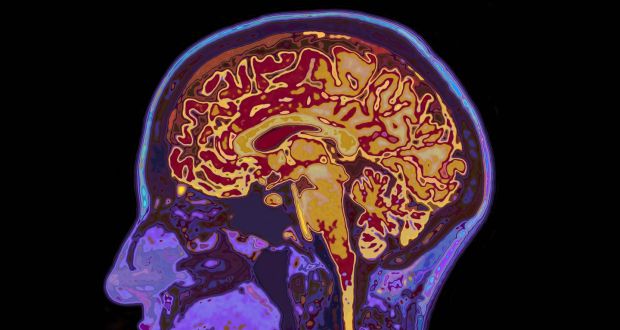COVID-19 Research: University of California Led Study Finds That Brain Pericytes Could Be Entry Points For SARS-CoV-2 And Are Potential Reservoirs
Source: COVID-19 Research Feb 12, 2021 4 years, 10 months, 2 weeks, 5 days, 21 hours, 39 minutes ago
COVID-19 Research: A news research led by scientist from University of California-San Diego along with researchers from Rady Children’s Hospital-San Diego, Rutgers State University-New Jersey and University of Wisconsin-Madison have found that the SARS-CoV-2 coronavirus is able to infect the brain pericytes and could also serve as reservoirs of the virus that contributes to
viral persistence.

From the study abstract, “
Clinical evidence suggests the central nervous system (CNS) is frequently impacted by SARS-CoV-2 infection, either directly or indirectly, although mechanisms remain unclear. Pericytes are perivascular cells within the brain that are proposed as SARS-CoV-2 infection points. Here the study team shows that pericyte-like cells (PLCs), when integrated into a cortical organoid, are capable of infection with authentic SARS-CoV-2. Prior to infection, PLCs elicited astrocytic maturation and production of basement membrane components, features attributed to pericyte functions in vivo. While traditional cortical organoids showed little evidence of infection, PLCs within cortical organoids served as viral ‘replication hubs’, with virus spreading to astrocytes and mediating inflammatory type I interferon transcriptional responses. Therefore, PLC-containing cortical organoids (PCCOs) represent a new ‘assembloid’ model that supports SARS-CoV-2 entry and replication in neural tissue, and PCCOs serve as an experimental model for neural infection.”
The study findings were published on a reprint server and are currently being peer reviewed.
https://www.biorxiv.org/content/10.1101/2021.02.09.430349v1
The study team recently conducted a study using pericyte-like cell-containing brain cortical organoids as an experimental model to investigate the impact of severe acute respiratory syndrome coronavirus 2 (SARS-CoV-2) infection on the central nervous system.
The research findings reveal that SARS-CoV-2 can invade cortical organoids and establish infection when they are integrated with pericyte-like cells.
The SARS-CoV-2 coronavirus, the causative agent of coronavirus disease 2019 (COVID-19), is an enveloped RNA virus that primarily affects both upper and lower respiratory tracts.
But in many COVID-19 cases, SARS-CoV-2 has been found to significantly impact other vital organs, including the heart, kidney, gastrointestinal tract, and brain.
A huge proportion of critically ill COVID-19 patients have been found to present with severe neurological complications, including ischemic stroke, seizures, encephalopathy, encephalitis-meningitis, neuro-vasculopathy, and hemorrhages.
Even disturbing is that many so called ‘recovered’ COVID-19 patients whether they exhibited asymptomatic, mild, moderate or severe conditions initially upon being infected, tend to exhibit a variety of neurological issues and conditions weeks and months still leading to the hypothesis of viral persistence.
As a result of SARS-CoV-2 entering host cells through angiotensin-converting enzyme 2 (ACE2), neural crest s
tem cell-derived pericytes that express considerably high levels of ACE2 are believed to be the primary brain entry point of SARS-CoV-2. Brain pericytes are perivascular cells that connect endothelial cells with astrocytic cells and regulate important functions of the central nervous system, such as neurogenesis and neuronal degeneration, neuroinflammation, and blood-brain barrier permeability.
For this study, the research team aims to explore whether brain pericytes are susceptible to SARS-CoV-2 infection.
Utilizing in vitro setups, the study team generated pericyte-like cells from pluripotent stem cell-derived neural crest stem cells. They observed that the pericyte-like cells expressed a relatively high amount of ACE2 receptor.
The study team next exposed pericyte-like cells with SARS-CoV-2 and surprisingly observed a gradual increase in viral RNA and viral nucleocapsid-positive cells up to 72 hours post-infection to explore the transmission dynamics. Moreover, they estimated that the production of infectious SARS-CoV-2 increased by almost 100-fold after 24 hours of infection.
With these findings, the study team investigated whether brain pericytes serve as an entry point for SARS-CoV-2 to the central nervous system.
The team integrated pericyte-like cells into mature cortical brain organoids, which are three-dimensional cultures of different brain cells that are used as an experimental model of developing the human cerebral cortex.
By conducting a series of experiments, the team confirmed that pericyte-like cells within cortical organoids were localized together with astrocytes and embedded within the basement membrane.
It was found that upon exposing pericyte-like cell-containing cortical organoids to SARS-CoV-2, significantly higher levels of nucleocapsid-positive cells and viral RNA were observed.
However in contrast, no such robust infection was observed upon exposing only cortical organoids to SARS-CoV-2. Importantly, they observed that in pericyte-like cell-containing cortical organoids, nucleocapsid-positive cells were co-localized with pericyte-like cells and astrocytes, but not to neurons. Using confocal imaging, they observed that astrocytes were themselves infected by the virus and were localized adjacent to infected pericyte-like cells.
These study findings indicate that SARS-CoV-2 infects astrocytes via pericyte-like cells.
Also regarding the pathogenesis of SARS-CoV-2, they observed a significant induction of neuronal cell death in infected pericyte-like cell-containing cortical organoids. Moreover, transcriptional upregulation of several type I interferon-stimulated genes was observed, indicating a heightened type I interferon inflammatory response in SARS-CoV-2-infected pericyte-like cell-containing cortical organoids.
The research findings reveals that SARS-CoV-2 can potentially infect pericyte-like cells and that susceptibility of cortical organoids to viral infection can be significantly increased by integrating them with pericyte-like cells. The virus-infected pericyte-like cells can spread the infection to other types of brain cells, including astrocytes. Activation of type I interferon responses and the induction of neuronal cell death are vital pathogenic responses observed in SARS-CoV-2 infected pericyte-like cell-containing cortical organoids.
The study team believes that the cortical organoid model they developed can be instrumental in studying the pathogenesis of SARS-CoV-2 in the central nervous system.
Importantly the study findings also suggest that these brain pericytes could also serve as reservoirs of the SARS-CoV-2 coronavirus and contribute to viral persistence.
For more on the latest
COVID-19 Research, keep on logging to Thailand Medical News.
